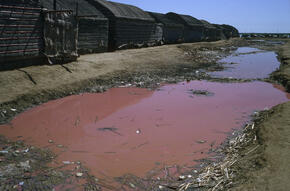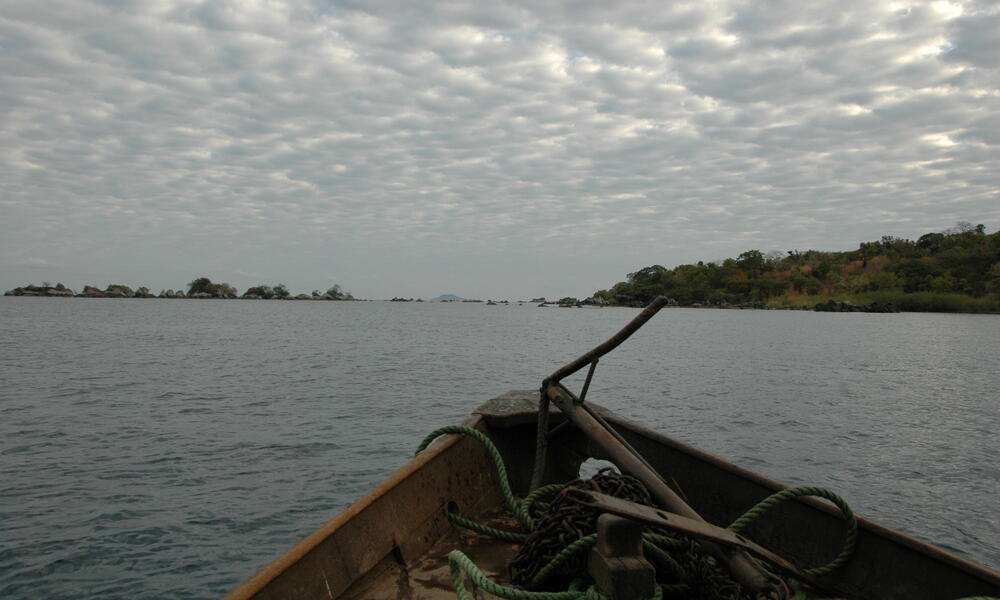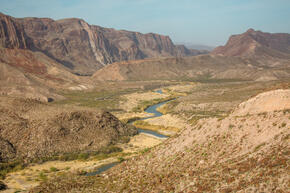Water Stewardship
Nearly every business sector is water-dependent in some way or another. Issues of water scarcity and poor water quality have significant and growing social, environmental and economic consequences. Yet many businesses are just beginning to understand what fresh water means to them, their profits, and their company’s long-term viability.
WWF's work on water stewardship helps governments, companies, investors and others understand their water footprints and become better water stewards. Stewardship goes beyond being an efficient water user. It is a journey that begins with contributing to the responsible, sustainable management of freshwater resources critical to business operations. But the journey doesn’t end there. Beyond awareness, understanding and internal action, WWF urges companies to look outside their own operations, supporting local watershed conservation and engaging in collective efforts to advocate, support and promote better basin governance, for the benefit of people and nature.
Partnering to promote private sector water stewardship at the global level
Protecting our freshwater resources cannot be accomplished alone. WWF looks across sectors to partner with organizations like Coca-Cola Company, United Nations’ CEO Water Mandate and the World Economic Forum in our shared pursuit of a water secure future. We support and lead numerous ground-breaking initiatives including the Alliance for Water Stewardship's standard, United Nations-supported Principles for Responsible Investment (PRI)’s work with investors, and water footprinting and mapping tools such as the Water Risk Filter. The data behind the Water Risk Filter and similar WWF projects has already been used by more than 2000 companies to map over 50,000 vendor sites in their supply chains. As part of the White House Climate Data Initiative, WWF committed to expanding, maintaining and sharing that data in partnership with leading technology companies. Such resources will empower industry, financiers and policymakers to strengthen global water stewardship, food security and climate resiliency.
Engaging with individual businesses to reduce the impacts of their water use
Today, companies with global operations, such as The Coca-Cola Company, Sodexo, and Procter & Gamble, partner with WWF to address the local impacts and risks associated with their water use. And these efforts are resulting in real gains for conservation. For example, our collaboration with The Coca-Cola Company and its bottling partners has set a goal to improve water efficiency 20 percent by 2012. Since 2004, these joint efforts have led to a reduction of 16%. By the end of 2012, the partnership is expected to save up to 50 billion liters of water annually—that’s the equivalent of 20,000 Olympic-size swimming pools.
Developing standards for international water stewardship
Working together with The Nature Conservancy, the Pacific Institute and others, WWF helps to promote the use of freshwater in a way that is socially beneficial, environmentally responsible and economically sustainable through the Alliance for Water Stewardship (AWS). AWS offers a variety of ways to improve, incentivize and recognize responsible water use, including helping members engage key stakeholders within their watershed and supply chain. After years of development, AWS launched its International Water Stewardship Standard in April 2014. This standard, which is one of the first global freshwater standards, has great potential to address WWF’s main water stewardship goals of achieving responsible water governance, sustainable water balance, good water quality and protection/restoration of important water areas. This will harness the resources of corporations and governments to steward freshwater for humans and nature.
Managing Water Resources in a Changing Climate
WWF has collaborated with local stakeholders and governments in critical river basins around the world to assess climate change vulnerability and plan interventions. Because institutions are central to the way water resources are managed, WWF has also engaged institutional partners to investigate what best positions water management institutions to effectively adapt to climate change. By working bottom-up in the field, where many impacts are already being felt, as well as top-down with institutions, which influence water management decisions, we hope to safeguard a future where both human and environmental needs are met, in spite of the climate uncertainties we currently face.
Learn more about WWF's work and water security in the Chihuahuan Desert.
Conserving Freshwater Habitats
WWF works together with communities, businesses and governments to conserve, protect and restore freshwater habitats across the world. About 75% of new sites included in the Ramsar List of Wetlands of International Importance since 1999 are the result of WWF’s work at different levels. WWF’s global goal of conserving and protecting freshwater across the world, requires local action with local partners. For example in the iconic Yangtze River Basin—the longest river in China and third longest in the world—WWF is works with local people and scientists in the headwaters to protect and restore the function of the world’s largest high altitude wetland.
We also helped establish a new protected area in and around Lake Niassa located in East Africa. Also known as Lake Malawi, the lake is the ninth largest in the world and is part of three countries – Malawi, Mozambique, and Tanzania. It is also home to over 1,000 species of fish. By bringing together governments, local communities and business interests, WWF’s efforts led the government of Mozambique to establish the Lake Niassa Partial Reserve. Lake Niassa is now the first freshwater lake under protection in that country and will help secure freshwater fish supplies for years to come.
Supporting Water Security
WWF works to secure the correct volume, timing and amount of water in a river so people and nature can thrive. Working across the globe, WWF supports responsible water use and infrastructure. Sometimes that work involves numerous partners across country borders as demonstrated by our work on the Rio Grande. This river, also known as the Rio Bravo, serves as part of the border between the United States and Mexico. Located in the Chihuahuan Desert, this river provides water to some of the fastest-growing urban areas in the United States and provides water to thousands of farms and ranches. However, over the past century, growth in human population—and the agricultural and urban development that accompanies it—has put enormous stress on the region. The result is a mounting ecological crisis that threatens the survival of wildlife and people.
Today, many of the Rio Grande’s species are endangered, and almost half of its original population has already gone extinct. WWF works to restore water flows along seven important sites along the Rio Grande and its primary tributaries, the Pecos River and the Rio Conchos. One of those sites is the Big Bend where in 2011 the United States and Mexico developed a working plan to cooperate in the protection and preservation of the area.
Helping Local Communities and Governments Conserve Iconic Water Basins
Beyond operational improvements, collaborations with the private sector also helps local communities and governments to conserve some of the world’s most iconic river basins. For example, corporate support for Guatemala’s Water Fund is protecting the cloud forests of the Sierra de las Minas Biosphere Reserve – the source water for downstream operations. Through reforestation activities and the introduction of sustainable agriculture methods, the Fund is securing water supplies while demonstrating the benefits of private investment in freshwater conservation and river basin management.





